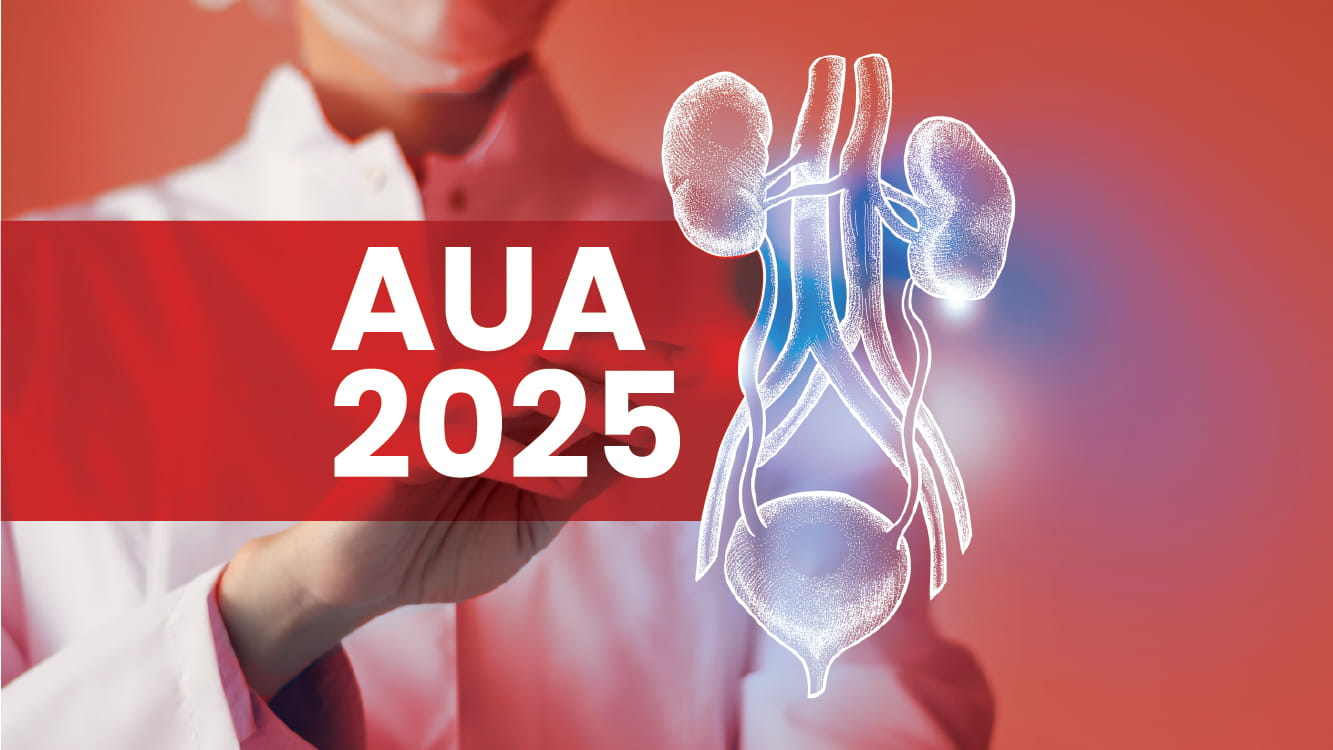Genetics and Therapeutics in Stone Disease (UAA Lecture)
Speaker: Professor Anthony CF Ng
Genetics of Stone Disease: Monogenic vs. Polygenic Influences
- Monogenic Disorders (1–2% of cases): Rare but often severe. Includes:
- Hypercalciuria via calcium metabolism gene defects.
- Cystinuria, primary hyperoxaluria, xanthinuria.
- Associated with systemic signs (hearing loss, seizures, ocular issues).
- Often autosomal dominant or X-linked inheritance.
- Polygenic Risk Factors: More common but individually low impact.
- Require cumulative genetic hits.
- Studied via GWAS (Genome-Wide Association Studies).
Genetic Risk Scores:
- Over 40 SNPs associated with nephrolithiasis.
- Early models from UK Biobank showed promise but lacked validation across diverse populations.
- Validation in African-American cohorts was suboptimal, indicating ethnic specificity of risk scores.
- Integration with environmental and metabolic data may improve predictive power.
Clinical Utility and Guidelines:
EAU and AUA guidelines recognize genetic influence but lack clear protocols for screening. AOA guidelines suggest testing in patients with rare stone types or primary hyperoxaluria.
Who to Screen?
- Pediatric stone formers, especially with recurrent disease.
- Patients with systemic manifestations or rare biochemical abnormalities.
- Adults with unusual stone composition or phenotypic features may be considered.
- Low-risk patients: general preventive measures remain adequate.
Future Directions and Therapeutic Implications:
- Current Tools and Interventions: Available genetic panels for cystinuria, hyperoxaluria, and calcium stone disease.
- Positive findings may guide:
- Targeted diet (e.g., low oxalate or methionine)
- Urinary alkalinisation
- Thiazide diuretics or pharmacotherapy
- Screening family members for early detection
Conclusion:
Genetic factors significantly contribute to urinary stone disease. Selective genetic screening is valuable for high-risk individuals, enabling personalized prevention and counselling. However, broader implementation awaits more robust data on cost, effectiveness, and clinical outcomes.
Do we Need to do Percutaneous Nephrolithotomy Anymore?
Speaker: Dr. Roger Sur
Introduction: Evolution of Stone Surgery:
Dr. Sur opened the session with a provocative question reflecting shifts in endourology: with the rise of advanced suction technologies, is percutaneous nephrolithotomy (PCNL) still necessary? He outlined three modern alternatives:
- Suction ureteral access sheaths (SUAS)
- Direct in-scope suction (DISS)
- Steerable ureteroscopic renal evacuation (SHURE)
- Suction Ureteral Access Sheaths (Dr. Naeem Bhojani, Montreal)
- Technology & Advantages:
- SUAS devices combine flexible, malleable tips and active suction.
- Provide enhanced visibility by clearing dust/fragments during lithotripsy.
- Reduces intrarenal pressure and possibly heat.
- Tips & Techniques:
- Requires high inflow irrigation (200–250 mmHg) and wall suction.
- Scope should ideally be positioned against the stone.
- Back walling the sheath into a calyx helps control flow and fragment egress.
- Intermittent scope withdrawal helps flush accumulated dust and avoid pressure spikes.
- Clinical Data:
- RCT showed superior early and 3-month stone-free rates (81% and 87%) vs traditional UAS (49% and 70%).
- Lower ureteral injury and postoperative fever rates.
- Improved patient-reported quality of life due to fewer retained fragments and lower complication rates.
- Conclusion: SUAS reshapes the kidney stone management paradigm. PCNL is now often reserved for stones >3–4 cm.
- Technology & Advantages:
- Mini-PCNL in the Era of Suction (Dr. Wilson Sui, Michigan)
- Clinical Perspective:
- Despite suction advances, mini-PCNL retains value, especially for:
- Lower pole stones
- Dense or complex calculi
- Fluoro-free procedures and stent avoidance
- Efficiency Arguments:
- Based on Poiseuille’s Law, percutaneous access allows 10x higher flow than ureteral access due to larger diameter and shorter length.
- Mini-PCNL achieves superior stone clearance, particularly for bulky fragments.
- Case Demonstration:
- Supine, ultrasound-guided access; efficient treatment of 2.5 cm stone.
- Demonstrated safe dilation and stone retrieval with no fluoroscopy.
- Conclusion: Mini-PCNL is far from obsolete. Selection should be patient- and anatomy-specific, with both modalities coexisting.
- Clinical Perspective:
- Suction Ureteroscopy & SHURE (Dr. Brian Eisner, Harvard)
- Technological Evolution: DISS: Alternating irrigation/suction through a single channel; best for dust <250 microns.
- SHURE (CVAC systems):
- Gen 1: Dual-lumen with suction, used post-URS under fluoroscopy.
- Gen 2: Integrated optics, suction, irrigation, and lithotripsy.
- Clinical Outcomes:
- ASPIRE RCT (Gen 1): Greater stone volume removed and fewer 1–2 year complications vs URS alone.
- Gen 2 Preliminary Results: Real-time aspiration eliminates dust accumulation while clear visual field aids complete stone clearance.
- Case Examples:
- Successful treatment of 2.5 cm stones by both experienced and novice users.
- Demonstrated simplicity and efficacy of aspiration-integrated ureteroscopy.
- Conclusion: Suction ureteroscopes offer meaningful advances in stone management, particularly for dusting and reducing recurrence, though PCNL remains vital for large burden cases.
Final Takeaways:
- Suction-enhanced technologies are redefining endourological practice.
- They offer higher stone-free rates, fewer complications, and better visualization.
- Intrarenal pressure control remains critical to avoid postoperative sepsis.
- PCNL still has a role, particularly for large, complex stones.
- The future likely lies in technique integration and patient-specific selection.
Crossfire Debate Overview: Management of the Asymptomatic Kidney Stone
Moderator: Dr. James Lingeman
Debators Treat: Dr. Necole Streeper & Dr. Alana Desai
Debators Observe: Dr. Ryan Hsi & Dr. Matthew Dunn
Index Case
- Patient Profile: 44-year-old healthy male
- Presentation: Spontaneously passed a distal right ureteral stone
- Incidental Finding: Contralateral asymptomatic renal stone detected on CT and confirmed on ultrasound
- Labs: Normal renal function, clean urinalysis except for a few RBCs
This case formed the basis of the panel's debate on whether to observe or proactively treat asymptomatic non-obstructing kidney stones.
Arguments for Observation (Drs. Dunn & Hsi):
- Guideline & Evidence-Based Justification:
- AUA 2016 guidelines support observation for asymptomatic, non-obstructing stones (Level C evidence).
- Multiple studies showed low surgical intervention rates (5.6–11.1%) over 3–4 years.
- A systematic review found intervention risk ranges from 12–35% over ≥2 years.
- Clinical Philosophy:
- Observation avoids overtreatment and surgical morbidity (e.g., stent pain).
- “Observation is active treatment”: requires regular surveillance and shared decision-making.
- Allows for tailored management based on risk evolution.
- Patient-Centered Considerations:
- Most patients remain asymptomatic or have mild symptoms manageable without intervention.
- Observation respects patient autonomy and lifestyle choices.
- Many patients prefer to “seize the day” rather than undergo prophylactic surgery.
Arguments for Treatment (Drs. Streeper & Desai):
- Risk of Future Complications:
- Up to 40% of stones >5 mm will require surgery.
- Half of observed patients experience a symptomatic event within 3–5 years.
- Delay may result in stone growth, necessitating more invasive procedures like PCNL.
- Planned vs. Unplanned Surgery:
- Planned surgery offers better outcomes, reduced morbidity, and avoids ER visits or urgent interventions.
- Surgeons and patients can coordinate care, reducing stress and system burden.
- Quality of Life:
- Studies show improved WISQOL and CREST scores post-elective surgery.
- Symptom prevention aligns with patient preference, especially among those with prior painful stone events.
- Emerging Innovations: Ultrasound-Based Therapies
- Ultrasonic Propulsion: Moves stone fragments using transcutaneous ultrasound.
- Burst Wave Lithotripsy (BWL): Noninvasive stone fragmentation with less renal trauma.
- Clinical Impact:
- RCTs show increased stone passage (by 58%) and reduced stone-related events (by 70%) with ultrasonic propulsion.
- Both technologies are now used in-office on awake patients, with minimal side effects and promising outcomes.
- Future Outlook:
- Technologies may shift treatment thresholds, making early, low-risk intervention more feasible.
- Could reduce debate by enabling minimally invasive management of borderline stones (e.g., 6–8 mm) in asymptomatic patients.
Panel Reflections and Takeaways:
- Consensus: Observation remains valid but must be selective and closely monitored.
- Surgery: Prophylactic treatment is justified in high-risk patients and offers quality-of-life benefits.
- Technological Advances: Noninvasive ultrasound treatments may revolutionize office-based stone care, improving patient outcomes and decision-making flexibility.
Prevention of Urinary Stones with Hydration: A Randomized Clinical Trial
Speaker: Dr. Alana Desai
Background & Rationale:
- Clinical Context: Increased fluid intake is widely advised to prevent urinary stone recurrence, but sustaining adherence remains challenging.
- Objective: To evaluate whether a multicomponent behavioural intervention improves fluid intake and reduces stone recurrence in patients with low urine volume.
Study Design: Multicentre, randomized controlled trial (RCT) with pragmatic features.
- Participants:
- Total: 658
- Age: ≥12 years
- Inclusion: ≥1 symptomatic stone in 3 years or stone progression in 5 years, and low urine volume (<2L/day in adults; <25cc/kg/day in adolescents)
- Arms:
- Intervention group: Received a structured hydration program with:
- Smart water bottle & fluid prescriptions
- Financial incentives (loss-framed) & structured problem-solving & low-touch supports (texts, gamification)
- Control group: Received guideline-based advice and smart bottle for optional use
- Intervention group: Received a structured hydration program with:
- Outcomes
- Primary Outcome: Symptomatic stone events (stone passage, surgery for symptomatic/asymptomatic stones)
- Secondary Outcomes:
- Radiographic progression (new stones, ≥2 mm growth)
- 24-hour urine volume
- Lower urinary tract symptoms (LUTS)
- Safety: Hyponatremia requiring hospitalization
Key Findings:
- Symptomatic Recurrence: No significant difference: 18.6% (intervention) vs. 19.8% (control)
- Urine Volume: Significantly higher in intervention arm at all-time points, though average volumes remained below guideline targets in both arms.
- Radiographic Outcomes: No differences in new stone formation, growth, or composite progression.
- LUTS: Higher symptom reporting at months 6 and 12 in the intervention arm.
- Safety: No hospitalizations for hyponatremia.
Interpretation:
The intervention increased fluid intake but did not translate into a reduction in stone recurrence. It highlighted the disconnect between surrogate endpoints (urine volume) and clinical outcomes (stone events). It, also, suggested that simpler, patient-centred strategies may be more practical than intensive behavioural programs.
Conclusion:
Behavioural intervention modestly improved urine output but did not reduce stone recurrence. Hydration remains a low-cost, low-risk recommendation, but this study underscores the need for realistic, sustainable prevention strategies rooted in meaningful outcomes.
American Urological Association 2025, April 26-29, Las Vegas, NV



